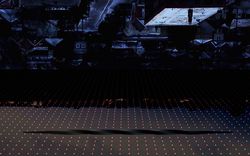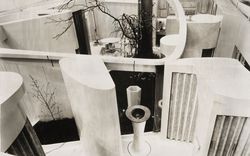1993: The “White City” Revisited
Montages by Melvin Charney
Founded in 1909 north of the ancient city of Jaffa, Tel Aviv became the stage for intense and unprecedented architectural development in the 1930s, when the modernist movement reached its height in Europe. Between 1931 and 1948, some four thousand buildings were erected, transforming the new city of the future State of Israel into a major economic and urban centre.
Architects from Tel Aviv and various European countries applied their broad range of knowledge acquired in avant-garde schools. Inspired by a new and rational architecture, they built apartment buildings, row houses and public buildings, designed public squares and recreational areas, and developed cooperative housing programs and common public services. One of the rare metropolises built according to the principles of the modernist movement, Tel Aviv offers a synthesis of new architectural design and urban planning adapted to the specific site conditions. The images captured by photographer Itzhak Kalter in the 1930s clearly show the freshly constructed buildings of the White City, glittering in the light and highlighting the intrinsic qualities of this architecture with its clear, simple lines.
Over half a century later, architect Melvin Charney portrays a city that is no longer quite so “white.” Many of the buildings have been damaged, neglected, and transformed over time by the demands of daily life. As part of his critical reflections on architecture and the city, the artist created The White City Revisited, a series of photomontages composed of assembled and uncropped images that inspire narrative and evoke the duality of a city torn between historicity and modernization, the discordance between the ideal planned city and its composite reality.
The worrisome state of the city and its buildings prompted a number of international conferences and, in 2003, Tel Aviv was classified a UNESCO world heritage site. The first Jewish city in the modern world, this vibrant and dynamic metropolis is also inextricably tied to current political issues and conflicts.
Search for other work by Melvin Charney in our collection.
















